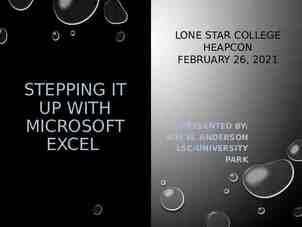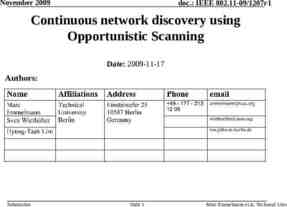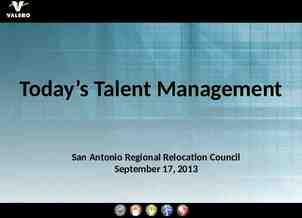SPEDAS Developers Workshop GEM – San Francisco, CA December
24 Slides1.84 MB
SPEDAS Developers Workshop GEM – San Francisco, CA December 2015 SPEDAS Software Slide 1 San Francisco, CA – December 2015
Agenda SPEDAS Developers Workshop 3:30-3:45 Opening remarks 3:45-4:00 SPEDAS development status and roadmap Jim Lewis 4:00-4:15 MMS Plugin Preview Barbara Giles 4:15-4:30 BARREL (and other?) plugin status Robyn Millan, others? 4:30-5:00 Q&A, discussion, planning for summer All GEM 5:00-5:30 SPEDAS tech support clinic SPEDAS Software Vassilis Angelopoulos, Jim Lewis Slide 2 Jim Lewis, others? San Francisco, CA – December 2015
What is SPEDAS? Space Physics Environment Data Analysis Software (SPEDAS) - Grass-roots data analysis software for Space Physics Community SPEDAS is an outgrowth of THEMIS / ARTEMIS that supports multiple missions Standardizes retrieval of data from distributed repositories Science processing and graphics contain powerful set of legacy routines. The THEMIS mission is served through the TDAS plugin The SPEDAS framework: - Contains a GUI for ease of use (available through IDL VM freeware) - Command line provides full access to IDL (paid license only) - Works with Windows, Linux and Mac OS X. - Is based on IDL, benefiting from platform independence and software maintenance services. SPEDAS Software Slide 3 San Francisco, CA – December 2015
What’s new! SPEDAS: Version 1.00 released in August 2014 - Support for loading netCDF files into tplot! SPEDAS GUI: - Support for loading/analyzing/plotting CDAWeb data API plugins for GOES, ACE, WIND, POES, FAST, BARREL, ERG & IUGONET, OMNI, and Geomagnetic/Solar Indices Tsyganenko field model support (IDL Geopack) for magnetic field modeling All GOES magnetic field and particle data available SPEDAS Software Slide 4 San Francisco, CA – December 2015
What is the current status of SPEDAS development? SPEDAS 1.00 was released in August 2014, including plugins supporting THEMIS, GOES, and IUGONET, as well as a general purpose interface for loading many other missions via CDAWeb. Other new features available via the SPEDAS 1.00 GUI include tools for loading various geomagnetic indices, and an interface to the GEOPACK magnetic field modelling library. The SPEDAS 1.00 plugin API gives plugin developers access to the “Load Data” and “Configuration Settings” panels, and the ability to add items to the “Plugins” top level menu. In addition to the IDL source code (which requires a full IDL license to use), the deliverables for SPEDAS 1.00 included precompiled executables for the most popular platforms (Windows, Linux, and MacOs), allowing users without IDL licenses to use all the features available within the SPEDAS GUI (but not the complete set of command line tools). SPEDAS Software Slide 5 San Francisco, CA – December 2015
Loading CDAWeb Data To Load CDAWeb Data: - Select ‘Load Data using CDAWeb’ under the File menu - Select Mission Group (i.e., TWINS, Cluster, RBSP, etc.) - Select the Instrument Type - Click ‘Find Datasets’ - Select variable or dataset to download - Click ‘Get CDAWeb Data’ SPEDAS Software Slide 6 San Francisco, CA – December 2015
THEMIS and RBSP Plots With a few clicks of the button the user can load, analyze, and plot data. Interactive Capabilities SPEDAS Software Slide 7 San Francisco, CA – December 2015
SPEDAS Mini Language Simple scripting language has been written in IDL. This language allows access to some data analysis functionality in the IDL virtual machine and eases manipulations of time series (tplot) data This language allows composition of statements and functions with order of operations to give significant flexibility in statement construction Examples: 1: Position to RE: calc,'"tha pos re" "tha state pos"/6374.4’ 2: Natural log of total esa density: calc,'"tha density log" ln("tha peir density" "tha psif density“) 3: Average magnetic pressure: reduce calc,'Pb avg mean(0.01*total("tha fgs dsl" 2,2)/25.132741)‘ d Additional examples can be found in general/examples/crib calc.pro SPEDAS Software Slide 8 San Francisco, CA – December 2015
Data Analysis Available Data Active Data Common Functions SPEDAS Software Slide 9 San Francisco, CA – December 2015
Magnetic Field Models The GUI is now able to: - Model the field at the spacecraft position - Trace field from position to the ionosphere and equator SPEDAS Software Slide 10 San Francisco, CA – December 2015
Load Data panel (IUGONET plugin tab) SPEDAS Software Slide 11 San Francisco, CA – December 2014
Configuration settings panel (THEMIS plugin tab) SPEDAS Software Slide 12 San Francisco, CA – December 2014
IUGONET, OMNI, Field Data crib iugonet 20120122sc.pro Yoshimasa Tanaka SPEDAS Software Slide 13 San Francisco, CA – December 2015
THEMIS ASI / SuperDarn Radar erg-sc crib thmasi sd sample Tomo Hori SPEDAS Software Slide 14 San Francisco, CA – December 2015
SPEDAS Development Roadmap Current “Bleeding Edge” nightly builds now include MMS plugin and tools. A MAVEN plugin is under development. We also hope to support the MMS and Van Allen missions with SPEDAS plugins. The interface between plugins and the SPEDAS GUI is being simplified. Currently each feature (e.g. the “Load Data” panel, the “Configuration Settings” panel, the “Plugins” menu) requires a separate configuration file, with information about all plugins that use that feature. So adding a new plugin may require manual edits to several files, which doesn’t scale well as additional “hooks” are added to SPEDAS. The new system will use a single configuration file per plugin, so that installing a plugin is more of a “drag and drop” operation. The “Data Analysis” panel is still somewhat specific to THEMIS (especially regarding the set of coordinate transforms supported). We are generalizing this panel so that each plugin can use this interface to expose their preferred set of coordinate transforms and other tools. Our QA procedures, release schedule, and set of deliverables need a bit more flexibility to keep up with new plugins as they are released or updated. SPEDAS Software Slide 15 San Francisco, CA – December 2015
SPEDAS Development Roadmap The “Load Data using CDAWeb” panel uses a number of routines from the CDAWlib library distributed by GSFC. For SPEDAS 1.00, we had to use a heavily modified version of CDAWlib: all routine names and call sites had a unique prefix added to resolve naming conflicts, and a number of calls to the IDL EXECUTE routine were rewritten so that the panel would work in the IDL Virtual Machine environment. For future releases, we hope to pass some of our changes (e.g. removal of EXECUTE calls) upstream to the CDAWLib developers, and to identify the smallest subset of the CDAWlib library required to support the CDAWeb feature, to reduce the number of naming conflicts that need to be resolved. Currently, all crash reports and help requests are routed to the THEMIS science support address, even if the crash or problem occurs in some other plugin. Future releases should allow each plugin to define its own error handlers and reporting policy. SPEDAS Software Slide 16 San Francisco, CA – December 2015
Spedas.org is now live! SPEDAS and plugin downloads Documentation wiki Mailing list Blog We welcome plugin developers to contribute content and participate in discussions on the SPEDAS site! (Registration required for wiki and blog edit privileges; please contact Jim Lewis ([email protected]) to gain access). SPEDAS Software Slide 17 San Francisco, CA – December 2015
SPEDAS Wiki Introduction: - You Tube Channel - SPEDAS video - Introductory Examples - Screen shots spedas.org/wiki SPEDAS Software Slide 18 San Francisco, CA – December 2014
SPEDAS Downloads Select: 1.2 Downloads From Main Page spedas.org/wiki/index.php?title Downloads SPEDAS Software Slide 19 San Francisco, CA – December 2014
“New Features (nightly “bleeding edge” builds) For the past year, University of Calgary has been operating a system of Redline all-sky cameras The THEMIS project has agreed to make the data available to the scientific community in the form of ISTP-compatible CDF files, similar to the THEMIS-GBO all-sky files. Bleeding edge builds now include procedures to generate the CDF files and have SPEDAS read and process the files. Files are available for November 2014 so far, and data through Spring 2015 is being processed and published as we speak. Contact Harald Frey ([email protected]) for more information SPEDAS Software Slide 20 San Francisco, CA – December 2014
THEMIS/GIMNAST white-light all-sky cameras IDL command: thm asi merge mosaic,’2014-12-01/03:50:00’ UCalgary Redline Emission Geophysical Observatories (REGO) Need to download latest version of SPEDAS with procedures thm rego create mosaic.pro, thm load rego.pro, thm rego array.pro Update path to !themis.local data dir/thg/l1/reg/ Update file !themis.local data dir/thg/l2/asi/cal/thm map add.sav IDL command: thm rego create mosaic,’2014-12-01/03:50:00’
Loading MMS Data in SPEDAS Instrument Load routine FPI HPCA EIS FEEPS AFG/DFG SCM ASPOC EDI EDP DSP mms load fpi mms load hpca mms load eis mms load feeps mms load afg/mms load dfg mms load scm mms load aspoc mms load edi mms load edp mms load dsp
Loading MMS Data in SPEDAS Keywords: trange: time range of interest Ex: trange [‘2015-9-1’, ‘2015-9-2’] probes: list of MMS probe #s Ex: probes [1, 2, 3, 4] ; all 4 s/c level: Level of the data to load (‘ql’, ‘l2’, .) Ex: level ‘ql’ ; load quicklook data data rate: rate of the data (‘fast’, ‘srvy’, ‘brst’, ‘slow’) Ex: data rate ‘brst’ datatype: specify a type of data to load (instrument dependent) FPI ex: datatype ‘des’
Loading MMS Data in SPEDAS To load MMS1, L2 DFG data for 9/1/2015: mms load dfg, trange [‘2015-9-1’, ‘2015-9-2’], probe 1, level ‘l2’ Examples for loading/plotting MMS data can be found at: projects/mms/examples





























